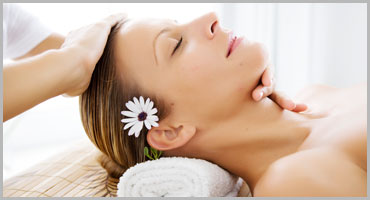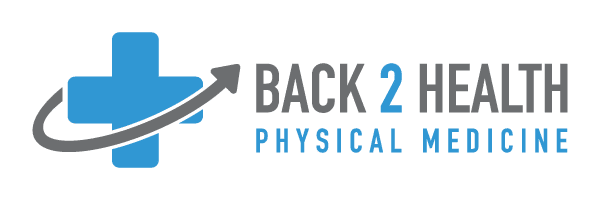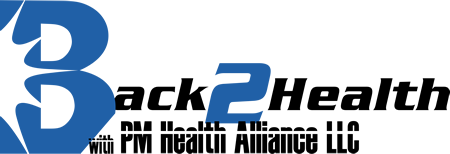 Massage is an ancient art of muscle manipulation that can have surprising effects on the body. Studies continue to prove the physical, and emotional benefits of even a single massage therapy session. As the number of proven health benefits grows, so do the number of individuals who turn to Back 2 Health Physical Medicine for a more balanced lifestyle.
Massage is an ancient art of muscle manipulation that can have surprising effects on the body. Studies continue to prove the physical, and emotional benefits of even a single massage therapy session. As the number of proven health benefits grows, so do the number of individuals who turn to Back 2 Health Physical Medicine for a more balanced lifestyle.
While people have been enjoying various types of massage for thousands of years, only recently has scientific testing demonstrated its power to heal and restore the body. A good massage can relieve stress, reduce pain and inflammation, restore a full range of motion, and resolve muscular tension or reflex issues. There’s no need to think of massage therapy as just as an indulgence when you understand the medical benefits it offers.
New Insight Into The Efficacy Of Massage
For centuries, patients knew that massage could relieve chronic back pain or sciatica because they simply felt better after each session. However, clinical testing now backs up that assertion. A full review by the Institute of Work and Health of 13 randomized clinical trials showed that massage had measurable effects when compared to inert or placebo treatments. Massage therapy was shown to be more effective than many similar non-invasive treatments.
What Are The Benefits Of Massage Therapy?
When choosing a treatment for issues like herniated discs or general neuropathy, you have many options and not all of them are created equally. Choosing massage therapy at our convenient Goose Creek location is a good option due to benefits like:
- Relaxing – you will know a difference in your stress levels and mood immediately.
- Improvement in Posture- Massage can help relax your overworked and stiff muscles caused by bad posture and help your body relax to its natural alignment.
- Better Circulation – Massage therapy can help your blood move through congested areas with pressure. This will help new blood to flow in, resulting improved body function.
- Lower Blood Pressure – Massage therapy can naturally lower your blood pressure!
- Relieves Headaches – 45 million Americans suffer from chronic headaches and migraines. Massage therapy can help reduce the frequency of headaches.
- Accelerated Recover After an Injury – Rehabilitation can be a long a frustrating process. Massage therapy can accelerate the recovery process, as well as help you relax and stay motivated.
- Non-invasive treatments – there’s no needles involved and no recovery period as with surgical intervention.
- Affordable – a few visits a year could keep you pain free without the high costs associated with more intensive treatments.
- Quick – a half hour of massage is often sufficient to reduce pain and stiffness significantly.
- Complementary – relying on massage for pain relief won’t keep you from pursuing other treatment options.
- Supports better overall health – a massage can increase blood circulation, release both physical and emotional tension, and treat specific issues at the same time.
- Improves performance – athletes can recover faster after training and relieve minor injuries with massage.
What Conditions Can Be Treated With Massage?
Nearly any long term condition that causes back or neck pain is a candidate for massage therapy treatment. Even if massage can’t get rid of the cause of your inflammation and limited range of motion, it can help relieve these symptoms. Patients with sciatica, compressed nerves, scoliosis, and other spinal and nerve issues often find relief through massage alone. If you are suffering with a problem in an isolated part of the body like carpal tunnel, massage treatments are available to relieve pressure on the nerves and restore full function. Massage therapy goes far beyond a simple back rub. Our Goose Creek clinic is staffed with a full medical team. We can provide chiropractic adjustments, allergy testing, inflammation management injections, and other services to eliminate conditions or keep them under control.
Can I Handle Massage With A Pre-Existing Condition?
Massage therapy is safe for most patients, but Back 2 Health Physical Medicine can provide testing and analysis if you are concerned that it could aggravate your pre-existing condition. Since we are spinal specialists, we can use various imaging techniques to determine what massage techniques are safest for you. If something hurts or feels uncomfortable, just tell the massage therapist and they can alter the treatment to fit your needs.
Types of Massage at Back 2 Health Physical Medicine
Our office offers a variety of massages! We have highly trained therapists that will work with you to ensure a quality massage.
Deep Tissue Massage
Deep Tissue Massage is really a misnomer in the field of massage therapy. There are numerous types and styles of massage therapy that would fall into the “deep tissue” category. Deep Tissue massage is typically Swedish based massage therapy. It may include elements of Sports massage, Myo-Fascial Release, Shiatsu, Myo-Therapy, Trigger Point Therapy, Neuromuscular Therapy or other styles too numerous to name here. In general terms deep tissue is a generalized classification of many different types of work that all have one thing in common… depth of pressure. Almost all deep tissue forms of massage therapy have a specific treatment goal in mind. These goals may range from something as simple as reducing soreness to stopping migraine headaches.
Myofascial Release
Myo-fascial Release is an effective hands-on technique that uses sustained pressure to reduce restrictions in the connective tissue system. This method is effectively used to eliminate pain, restore motion and change shape and structure of soft tissue. The theory of Myo-fascial Release requires an understanding of the fascial system (or connective tissue). The fascia is a specialized system of the body tissue that creates shape and structure of soft tissue. Fascia is the packaging system of the body that surrounds and interweaves every muscle, bone, nerve, artery and vein as well as all of our internal organs including the heart, lungs, brain and spinal cord. The most interesting aspect of the fascial system is that it is not just a system of separate coverings. It is actually one structure that exists from head to foot without interruption. In this way you can begin to see that each part of the entire body is connected to every other part by the fascia, like the yarn in a sweater.
In a normal healthy state, fascia has a flexible, elastic configuration. It has the ability to stretch and move without restriction. When we experience physical trauma, scarring, or inflammation, fascia loses its pliability. It becomes tight, restricted and a source of tension to the rest of the body. Traumas, such as a fall, whiplash, surgery or just habitual poor posture over time and repetitive stress injuries have cumulative effects on the fascial system. Tight or restrictive fascia can exert excessive pressure, producing pain or restriction of motion. This may affect flexibility and stability, and is a determining factor in our ability to withstand stress and strain. There are many flavors of Myo-fascial release work that you may come across in your exploration of body work. Without going into further detail some names you may have heard of are Myo-fascial Release, Rolfing, Hellerwork, and aspects of Neuromuscular Therapy.
Neuromuscular Therapy
Neuromuscular Therapy (NMT) is treatment specific massage therapy. It attempts to address soft tissue dysfunction through analysis of postural distortion, biomechanical dysfunction and soft tissue causes of patterns presenting pain conditions. This bodywork deals with of four systems of soft tissue: the muscular system, the connective tissue system (fascia), the nervous system, and the lymphatic system. NMT incorporates various techniques such as myo-fascial release, manual lymphatic drainage, linear and cross fiber friction and trigger point therapy to assess and treat areas of pain restricted range of motion and inflammation. NMT could best be described as the integration of each of these treatment methods combined with bio-mechanical analysis and effective rehabilitation exercises. NMT sessions typically have a specific treatment goal focused on pain remediation, increased range of motion or structural change.
A typical session lasts from 30-90 minutes and is often focused on a specific area of treatment. The therapists follow a specific protocol of rehabilitation. This practice usually involves assessment, treatment, stretching, and strengthening. NMT therapists believe that the healing process should also be an educational process, so they work to teach the patient about their health, structure, biomechanics, and anything else that may be influencing their pain condition.
Sports Massage
The prime purpose of sports massage therapy is to help alleviate the stress and tension which builds up in the body’s soft tissues during physical activity. Whether one is a world class athlete, or a desk jockey, minor injuries and muscle tension occur, due to overexertion and/or overuse. Massage aids in recovery and repair of these tissues. Above all, sports massage can help prevent those nagging minor injuries that so often get in the way of optimum performance and achievement.
This treatment is not just for the athlete: anyone can benefit from sports massage, including people in physically demanding jobs and those not quite so obvious (occupational, emotional and postural stress may produce many similar characteristics to sports injuries). Sports massage tends to be deeper and more vigorous than Swedish massage. It is based on the various elements of Swedish massage and often incorporates a combination of other techniques involving stretching, compression, friction, toning, and trigger point response techniques similar to Acupressure and Shiatsu. The skilled therapist brings together this blend of techniques, knowledge and advice during a treatment. The goal of sports massage is to promote optimum performance, injury-free training and minimize post event injuries.
Massage works best when combined with other treatments. There’s no need to visit dozens of different specialists when our team at Back 2 Health Physical Medicine is diverse enough to provide these options all within one building. If excess weight or food allergies are triggering your symptoms, we can pinpoint these causes and provide opportunities to fix them while helping you feel better today with a relaxing massage.


